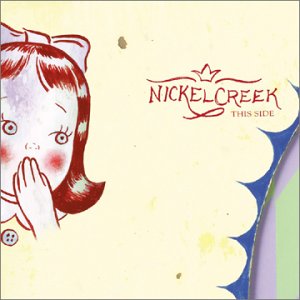« Respect the Silence |
Main
| 4 and 7. The Committal Notes. »
 September 3, 2009 | Why I like Chris Thile September 3, 2009 | Why I like Chris Thile
Everyone is dazzled by stars. The superhuman powers of true musical genius can take your breath away sometimes. The problem is, we often mistake the flash for wizard trickery, writing off the experience as observing some kind of freak show, and we completely miss the true musicality. This is commonly the case dissecting and analyzing the playing of mandolinist virtuoso Chris Thile.
 As a boy, it was obvious he had prodigy potential, and the multiple decades of practicing, touring, exchanging with other world class players has honed him to legendary status, even at a relatively young age. Most noticed is the incredible speed, the capacity for memory, and his ability to keep pace with any premier performer. What is arguably his most important talent, and one even us average players can learn from is not the unattainable speed, but the uncanny ability to fit the mandolin into the rest of the ensemble. As a boy, it was obvious he had prodigy potential, and the multiple decades of practicing, touring, exchanging with other world class players has honed him to legendary status, even at a relatively young age. Most noticed is the incredible speed, the capacity for memory, and his ability to keep pace with any premier performer. What is arguably his most important talent, and one even us average players can learn from is not the unattainable speed, but the uncanny ability to fit the mandolin into the rest of the ensemble.
Thile's Nickel Creek years with his fellow childhood bandmates, Sara and Sean Watkins are textbook examples of how a mandolin can not only fit in, but support the ensemble's energy and aesthetic, artistic message. These are the tidbits you should glean after a close listen to some of the Nickel Creek discography:
He always supports the rest of the ensemble. Sure, there are the moments of herculean display, but his true virtue is what he does to back the band, the quiet, steady pulse that retains a melodic integrity. It does not trump, it complements.
He adds energy through rhythmic subdivision. Through apposite cross picking patterns, playing the beat's subdivisions (16ths instead of 8ths), the band is pushed forward. Guitar/mandolinist converts often ignore this potential of the mandolin. It should not just be strummed like a guitar. Playing simple arpeggios double time (softly!) yields a drive that can never be accomplished by simple chord strumming. This is especially important if the band already has a guitar. The mandolin at soft levels becomes a veritable pair of tightly tuned maracas.
He injects appropriate fills at the ends of phrases. These little melodic tidbits are tasteful and never the product of musician bravado or ego. He exploits space as much as injecting intensity; when he's not soloing, he's complementing at softer dynamic levels.
He uses interesting chord vocabularies and extensions. Nickel Creek is scorned by traditionalists for abandoning common Bluegrass harmonic vocabularies. Thile combines the Old School bluegrass conventions with new sounds, injecting jazz chords and classical motifs. He pushes boundaries of harmony with delight.
He uses thematic material consistently. He's great at not only creating "riffs," he uses them with consistency. Think of the Princess Leia theme in the Star Wars movies, or any Wagnerian opera in which a short phrase or motif recurs, helping to "tag" the character. There's something comforting in a recognizable, repeatable theme, and Thile creates them regularly in his accompaniment. Think of the mandolin introduction to "This Side," how this very simple phrase returns you "home" through the entire song, exploring, wandering and then coming back.
We love our stars, but it's the behind-the-scenes stuff we can study and take home with us. The unattainable musicianship is entertaining, but it's the aforementioned attainable stuff we can take home with us and improve our own playing.

Further
Mandolin Cafe: Chris Thile Interview
What's a mandolin sound like?
10,000 hours? Discipline... in moderation.
World's Best Musician
Reason's why
Nickel Creek
Posted by Ted at September 3, 2009 8:39 AM

Disclaimer: In the 'Information Age' of the 21st Century,
any fool with a computer, a modem, and an idea can
become a self-professed 'expert." This site does not
come equipped with 'discernment.'
|



